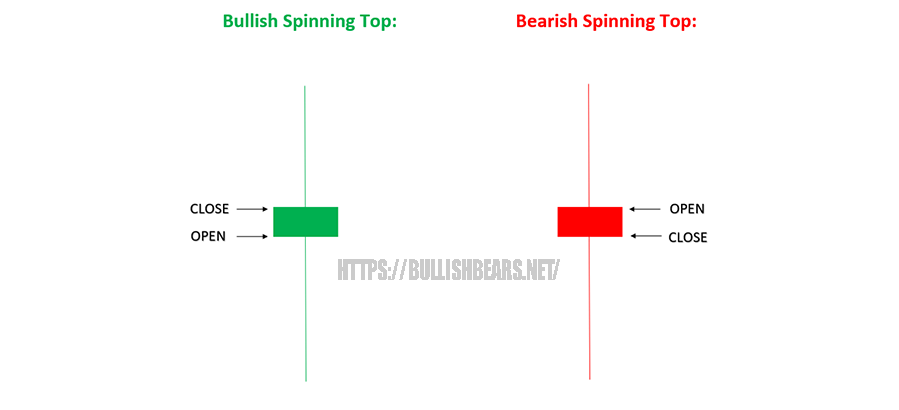Hammer
The cryptocurrency market is known for its volatility, offering both opportunities and challenges for traders and investors. In this dynamic environment, traders are constantly seeking effective tools and strategies to navigate the markets successfully. Technical analysis is one such tool, and within it, the pattern stands out as a crucial indicator of potential bullish trend reversals.
Chapter 1: Understanding Technical Analysis in Crypto Trading
1.1 What is Technical Analysis?
Specialized examination is a system utilized in monetary business sectors, including cryptographic money exchanging, to foresee future cost developments in light of verifiable cost information, exchanging volume, and other specialized markers. It is grounded in the conviction that verifiable cost and volume examples can give bits of knowledge into future market conduct.
1.2 The Role of Candlestick Patterns
Candlestick patterns are a fundamental component of technical analysis. These patterns provide visual representations of price movements over a specified time period. Each candlestick contains information about the opening, closing, high, and low prices for that period. By analyzing these patterns, traders can make informed decisions about market entry and exit points.
1.3 The Importance of Crypto Signals
In the world of cryptocurrency trading, where prices can change dramatically within minutes, having reliable signals is essential. Crypto signals, including cryptocurrency signals, live crypto signals, free crypto signals, and best crypto signals, are trading recommendations generated by analyzing technical indicators, patterns, and market data. They play a critical role in helping traders make well-informed decisions in this fast-paced environment.
Chapter 2: Introduction to the Hammer Pattern
2.1 Definition and Basics
The pattern is a bullish reversal pattern that typically forms at the end of a downtrend. It consists of a single candlestick with distinct characteristics. The Hammer resembles a hammer, with a small body near the top and a long lower shadow (also known as a tail).
2.2 The Anatomy of a Hammer
The “body” of the Hammer is typically small and can be bullish (green or white) or bearish (red or black).
The “long lower shadow” is an extended line below the body, representing the low price of the period.
The “short or absent upper shadow” indicates that there was little to no price movement above the body during the period.
2.3 Types of Hammer Patterns
While the classic pattern is the most recognized, there are variations such as the Inverted Hammer and the Dragonfly Doji, which have similar characteristics but may carry slightly different implications.
Chapter 3: Identifying the Pattern
3.1 Step 1: Locate the Downtrend
The pattern is most effective when it forms at the end of a downtrend. Traders should first identify a clear and established downtrend on the price chart. This downtrend is characterized by a series of lower highs and lower lows.
3.2 Step 2: Observe the Hammer Formation
Once a downtrend is identified, traders should watch for the formation of the Hammer pattern. This involves closely monitoring a single candlestick with the distinct characteristics of a small body, a long lower shadow, and a short or absent upper shadow.
3.3 Step 3: Confirming the Hammer
Confirmation is a crucial step when using the Hammer as a bullish reversal signal. To confirm the pattern, traders should look for additional signs, such as an increase in trading volume during the Hammer’s formation or the presence of other technical indicators supporting a bullish reversal.
Chapter 4: The Psychology Behind the Hammer Pattern
4.1 Understanding Market Sentiment
To understand the significance of the pattern, it’s crucial to grasp the underlying market sentiment. During a downtrend, sellers are in control, and pessimism prevails in the market. However, as the Hammer pattern forms, a shift in sentiment occurs.
4.2 Interpretation of the Hammer’s Components
Each component of the pattern reflects a specific change in market sentiment:
The small body suggests that the selling pressure is diminishing, and there is indecision in the market.
The long lower shadow signifies that sellers pushed prices lower during the period but failed to maintain those levels.
The short or absent upper shadow indicates that buyers are stepping in and preventing further price decline.
4.3 Bullish Reversal Expectations
The pattern’s significance lies in its potential to mark the end of a downtrend and the beginning of a bullish reversal. Traders who recognize this pattern often expect prices to rise in the subsequent trading sessions. This anticipation is rooted in the idea that the pattern reflects a shift from pessimism to optimism among market participants.
Chapter 5: The Role of Volume in the Pattern
5.1 Volume Analysis in Crypto Trading
In cryptocurrency trading, volume analysis is a critical component of technical analysis. Trading volume represents the number of units of a cryptocurrency traded within a specified time period. It provides valuable insights into the strength and validity of price movements.
5.2 Volume Confirmation for Hammer Patterns
When identifying a pattern, traders should pay attention to trading volume. An increase in volume during the formation of the Hammer can serve as confirmation of the pattern’s validity. This surge in volume suggests that the determination of sellers is waning, making the potential reversal more significant.
Chapter 6: Backtesting the Hammer Pattern
6.1 Historical Performance in Cryptocurrency Markets
To assess the effectiveness of the Hammer pattern in crypto trading, traders often engage in backtesting. Backtesting involves analyzing historical price data to see how the pattern would have performed in past market conditions.
6.2 Limitations of Backtesting
While backtesting can provide valuable insights, it has limitations. Historical price data may not fully represent future market conditions, and the effectiveness of the Hammer pattern can vary across different cryptocurrencies and timeframes. Traders should use backtesting results as a guideline rather than a definitive prediction of future performance.
Chapter 7: Practical Application of Hammers in Crypto Trading Signals
7.1 Entry Points and Take-Profit Levels
Traders can use the Hammer pattern as a signal for potential entry points in long positions. After confirming the pattern, a trader may consider opening a long position near the close of the Hammer candle. Setting take-profit levels is crucial to lock in profits when the market moves in favor of the trade.
7.2 Risk Management and Stop-Loss Placement
Risk management is paramount in crypto trading. Traders should never risk more than they can afford to lose and should employ proper risk management strategies. Setting stop-loss orders is essential to limit potential losses in case the market moves against the trade.
7.3 Leveraging Live Crypto Signals
Live crypto signals provide traders with real-time updates and recommendations based on current market conditions. These signals can be invaluable for traders looking to capitalize on emerging opportunities, including those signaled by the Hammer pattern. Staying updated with live crypto signals can help traders make timely decisions.
Chapter 8: Combining Hammers with Other Technical Indicators
8.1 Moving Averages
Traders often combine the Hammer pattern with moving averages to enhance their trading signals. Moving averages smooth out price data and help identify trends. When a Hammer pattern forms after a prolonged downtrend and crosses above a key moving average, it can strengthen the bullish reversal signal.
8.2 Relative Strength Index (RSI)
Traders can use RSI in conjunction with the Hammer pattern to confirm oversold conditions in the market. When the RSI indicator is in oversold territory (below 30), and a Hammer pattern forms, it can reinforce the bullish reversal signal.
8.3 Fibonacci Retracement
Fibonacci retracement levels are horizontal lines that indicate potential support and resistance levels based on key Fibonacci ratios. Traders can use Fibonacci retracement in combination with the Hammer pattern to identify potential price reversal points and set profit targets more accurately.
Chapter 9: Real-Life Examples of Hammers in Crypto Markets
9.1 Case Study 1: Bitcoin (BTC)
In this case study, we will examine historical price charts of Bitcoin to identify instances where the Hammer pattern signaled potential trend reversals.
[Include charts and explanations of each instance]
9.2 Case Study 2: Ethereum (ETH)
Similar to the Bitcoin case study, we will analyze Ethereum’s price charts to identify Hammer patterns and their subsequent price movements.
[Include charts and explanations of each instance]
9.3 Case Study 3: Altcoins
Altcoins often exhibit different price patterns and behaviors compared to major cryptocurrencies like Bitcoin and Ethereum. We will explore how the Hammer pattern applies to various altcoins, highlighting both successful and unsuccessful instances.
[Include charts and explanations of selected altcoins]
Chapter 10: Crypto Signals and Their Role in Hammer Trading
10.1 Understanding Crypto Signals
Crypto signals, including cryptocurrency signals, live crypto signals, free crypto signals, and best crypto signals, are trading recommendations provided by experienced analysts and traders. These signals are generated through the analysis of technical indicators, patterns, and market data. Crypto signals aim to help traders make informed decisions about buying, selling, or holding specific cryptocurrencies.
10.2 The Significance of Live Crypto Signals
Live crypto signals offer real-time updates and recommendations, making them particularly valuable for traders looking to stay ahead of market movements. Live signals can help traders capitalize on emerging opportunities signaled by patterns like the Hammer.
10.3 Accessing Free Crypto Signals
Free crypto signals are widely available on various online platforms and forums. While they can be a useful resource, traders should exercise caution and ensure that the sources providing free signals are reputable and reliable.
10.4 The Hunt for the Best Crypto Signals
Seeking the best crypto signals requires diligent research and assessment of signal providers. Factors such as accuracy, track record, and transparency should be considered when evaluating signal services.
10.5 How to Use Crypto Trading Signals
Effectively using crypto trading signals involves integrating them into your trading strategy. Traders should consider the signals alongside other technical and fundamental analysis tools and implement proper risk management practices.
Chapter 11: Common Pitfalls and Challenges
11.1 False Signals
One common challenge when using the Hammer pattern, like any technical indicator, is the possibility of false signals. Not every Hammer formation leads to a significant trend reversal. Traders must exercise caution and consider additional factors, such as market conditions and other technical indicators, to filter out false signals.
11.2 Emotional Trading
Emotions can play a detrimental role in trading. When a trader becomes overly emotional and ignores risk management strategies, they may incur substantial losses. It’s crucial to maintain discipline and follow a well-thought-out trading plan when using the Hammer pattern.
11.3 The Risks of Relying Solely on Signals
While crypto signals can be valuable tools, relying solely on signals without understanding the underlying market dynamics and conducting your analysis can lead to poor trading decisions. Traders should use signals as part of a broader trading strategy.
Chapter 12: Conclusion
12.1 The Hammer Pattern in Crypto Trading
The Hammer pattern is a powerful bullish reversal signal that can be a valuable addition to a trader’s toolkit. However, it should be used in conjunction with other analysis techniques and risk management strategies to maximize its effectiveness in the highly volatile world of cryptocurrency trading.
12.2 The Evolving Landscape of Crypto Signals
As the cryptocurrency market continues to evolve, the importance of reliable crypto signals, including cryptocurrency signals, live crypto signals, free crypto signals, best crypto signals, and crypto trading signals, will only grow. Traders should stay informed about the latest developments in the crypto signal industry to make the most of these valuable resources.
12.3 Future Trends in Crypto Trading
The future of crypto trading holds exciting possibilities, with advancements in technology and the integration of artificial intelligence (AI). Traders should continue to adapt and explore innovative strategies to thrive in this dynamic and ever-changing market.
In conclusion, the Hammer pattern is a valuable tool for traders seeking bullish reversal signals in the cryptocurrency market. When used effectively, in combination with other technical indicators and risk management practices, it can help traders identify potential trend reversals and make informed trading decisions. However, it’s essential to remember that no single pattern or signal is foolproof, and successful trading requires a comprehensive approach that considers various factors impacting the market.







